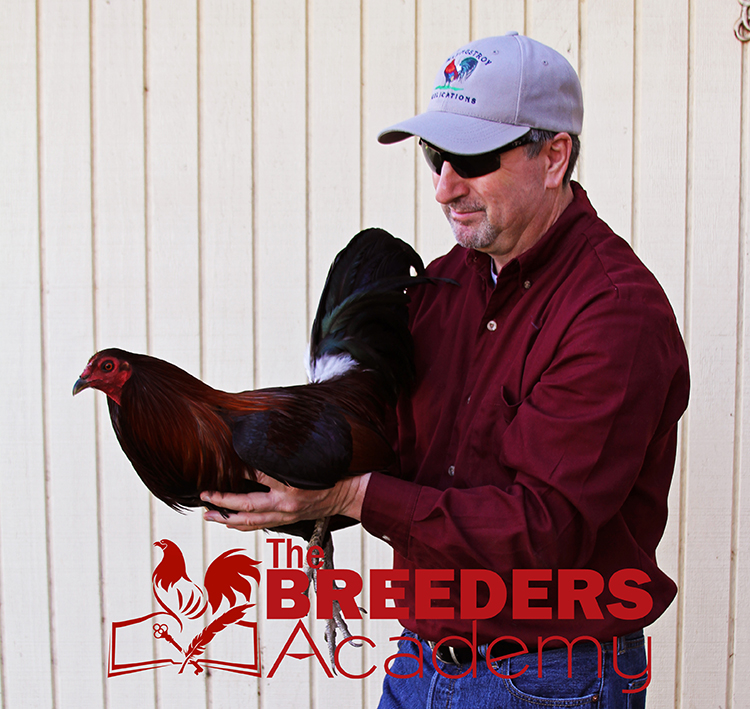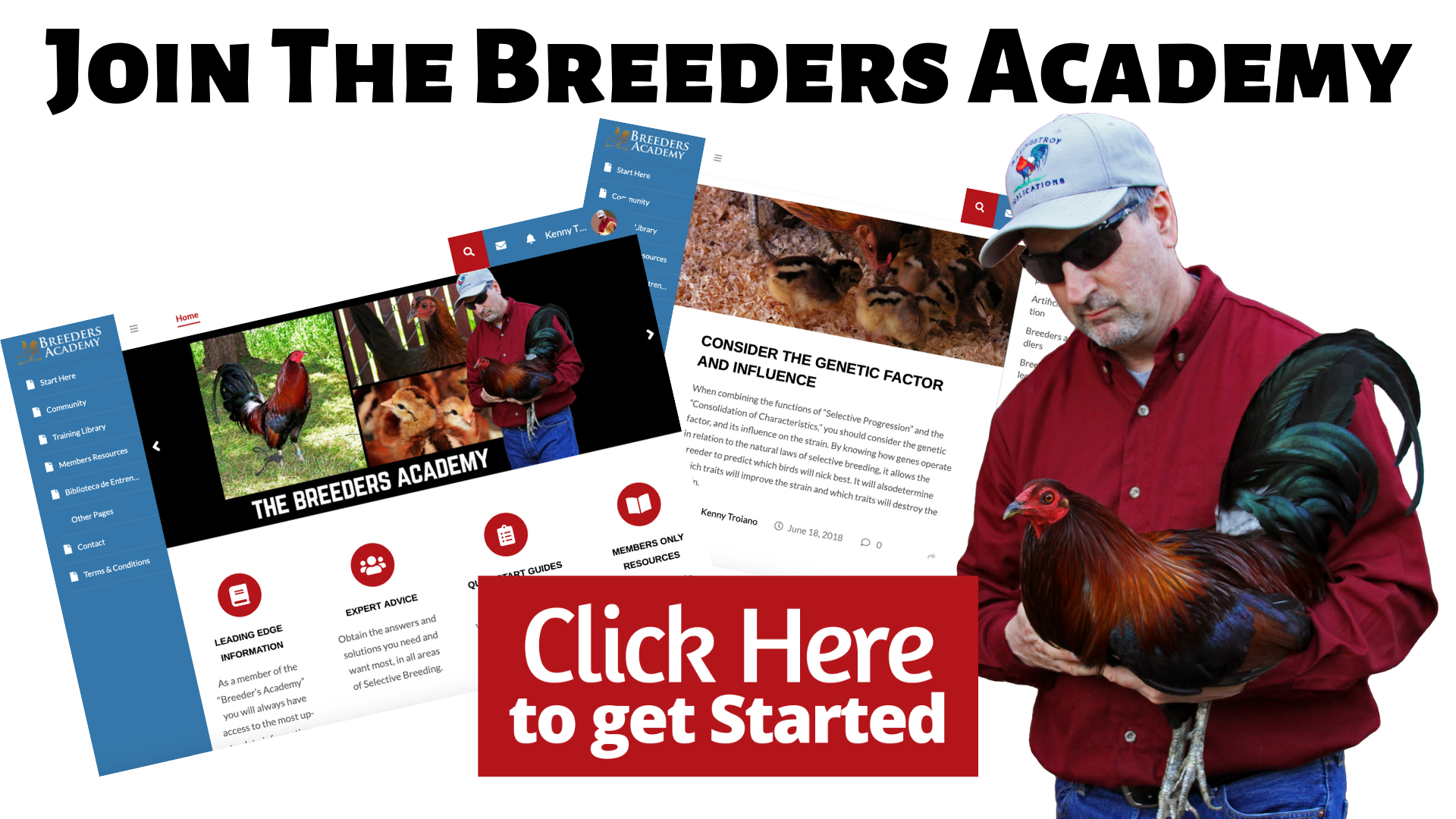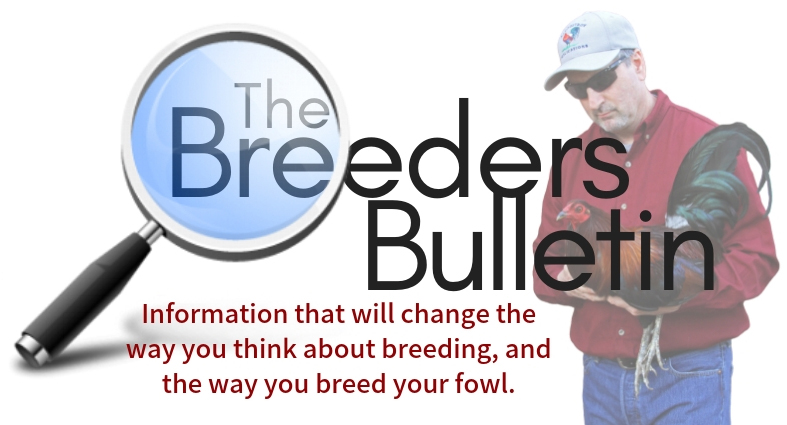Advantages and Disadvantages
By Kenny Troiano
Copyright © 2020 by Kenny Troiano/Maximus Troy Publications

Crossbreeding is the mating of one breed to another, such as an American Game with an Aseel. In the world of American Games, it can arguably be said that the breeding of unrelated strains, such as a Hatch over a Sweater, or a Hatch from one breeder to a Hatch of another is crossbreeding. Anytime you introduce new blood, you are essentially crossbreeding.
There are many reasons for crossbreeding, for example:
- To improve the general health of the flock through genetic diversity
- When there is a lack of improvement in your present breeding program, which may indicate that your birds are simply lacking the right genes.
- Probably the most common reason to crossbreed is to attain hybrid vigor, which I will discuss in more detail in a moment.
Crossbreeding is also used, during the early stages, in the creation of a strain, or when establishing a new breed. However, it can be an advantage as well as a disadvantage.
The disadvantages of crossbreeding: Although, crossbreeding can improve health, and achieving hybrid vigor, it can also bring in new weaknesses that you didn’t even know were there. These weaknesses may be genetic or from exposure to disease. When you bring in new blood, you may not see the changes you’re looking for until the second or third generation. In the meantime, you are taking a risk of introducing unwanted weaknesses.
To improve an already established family or strain, it is best not to introduce new blood through crossbreeding. In this case, I believe crossbreeding to be unnecessary. By line-breeding to sub-lines, and later bringing them together through line-crossing, one should be able to continue a strain indefinitely without any crossbreeding, whatsoever.
When crossbreeding is a necessary evil: However, if you find it absolutely necessary to crossbreed, it would be wise to select a specimen from a reputable breeder, who maintains a closely inbred strain. Also, make sure his birds resemble yours as closely as possible. They should share many of the same characteristics and traits. If they are different in any way, they should be better than your fowl, never worse.
Once you are sure of their form and function, such as their conformation of body and color of plumage, temperament and performance ability, and that they are relatively free of serious defects, and have good disease resistance, make your cross.
Crossbreeding introduces an entirely new group of genes, some good and some bad, which you will have to deal with for years to come.
HYBRID-VIGOR (Heterosis): It’s impossible to talk about crossbreeding without mentioning something about the benefits of hybrid-vigor.
The real purpose of crossbreeding is to provide for the combination of desirable qualities from two distinct breeds or strains. The second purpose is to improve their function. Hybrid-vigor enhances their function. It is important to note that these effects can be due to Mendelian or non-Mendelian inheritance, and that hybrid-vigor has the reverse effects of “Inbreeding Depression.”
For domestic chickens, especially that of the commercial breeds, which are bred for better eggs and meat, hybrid-vigor is used to create birds that lay more eggs each year, and produce meat chickens for market in less time (about 40 days). For Gamefowl, hybrid-vigor allows the breeder to create individuals with better function than that of their parents.
To realize the greatest benefits of hybrid-vigor, you must first maintain a high degree of homozygosity. This is achieved by maintaining two pure, closely bred families or strains.
However, many breeders are bypassing the tactic of creating or maintaining a strain, and using crossbreeding as their only method of breeding. To achieve hybrid-vigor through heterozygosity they are constantly crossbreeding. For most, this becomes an endless search for new blood, with results that are unpredictable.
Whether you are a creator of strains, or a cross-breeder, consider these two points:
- how important is predictability to your breeding program?
- do you want to hide the bird’s genetic weaknesses, and hope that they will never show up, or force them to the surface, so that you can eliminate them?
It’s up to you!
To learn more about crossbreeding, line-crossing and hybrid-vigor, which includes illustrations and videos, join us at The Breeders Academy Membership Website.

